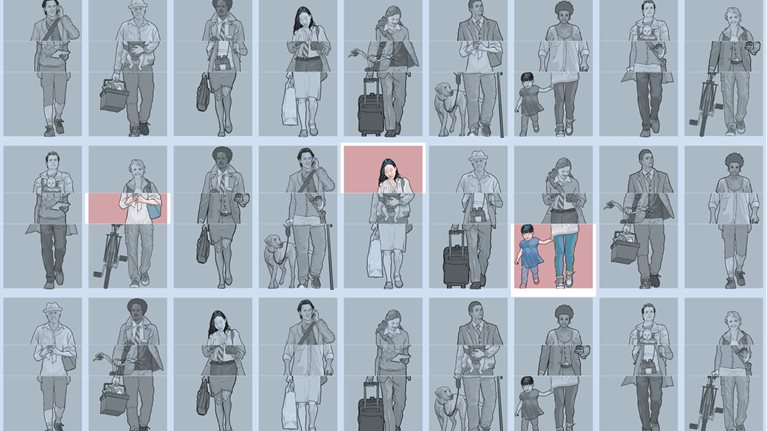Governments around the world know that to deliver for citizens, they must transform the services they provide. Aging populations are putting huge pressure on health and social services; educational systems need to equip young people with the skills for a technology-driven world; and the changing shape of cities is creating new demands on infrastructure. Many government services do not meet citizens’ growing expectations. These trends are contributing to public discontent.
Stay current on your favorite topics
Unfortunately, around 80 percent of government efforts to transform performance don’t fully meet their objectives—a key finding of a survey of nearly 3,000 public officials across 18 countries as part of a new study by the McKinsey Center for Government. The study also includes insights from 80 case studies, as well as 30 in-depth interviews with leaders who have personally led transformations in government. Between them, these leaders have more than 300 years of collective experience in what it takes to succeed.
The failure rate of government transformations is far too high. It represents a huge missed opportunity to tackle society’s greatest challenges more effectively, to give citizens better experiences with government, and to make more productive use of limited public resources. If governments around the world matched their most improved counterparts, they could save as much as $3.5 trillion a year by 2021 while maintaining today’s levels of service quality. Alternatively, they could release substantial funds for the services citizens most care about, while keeping overall government expenditure constant.
Would you like to learn more about our Public Sector Practice?
Of course, this is easier said than done. Government leaders often have limited political capital, particularly in sensitive services such as education and healthcare, and in instances where ministers serve in a minority or coalition government. The public sector often has too many priorities: leaders try to reform too much, across too broad a waterfront. Another challenge is a lack of leadership longevity. For example, a review of ministers of health across 23 countries from 1990 to 2009 found that half of them served for less than two years in office.
To grasp the prize, governments can learn from the 20 percent of transformations that do achieve their goals. Our study not only shows what that involves but also highlights dozens of real-world success stories. It identifies five disciplines that, together, can more than triple the success rate of government transformations (exhibit). These disciplines may seem obvious, but our research shows that they are extremely difficult to get right. We call them the five Cs:

- Committed leadership. Transformation leaders must go beyond standard public-sector management routines, committing extraordinary energy to the effort, taking personal responsibility for success or failure, leading by example to facilitate change, and challenging long-established conventions. To inspire the transformation, they must spend substantial time communicating face-to-face with the people affected, listening as much as they talk.
- Clear purpose and priorities. Successful transformations paint a compelling picture of their destination and make it crystal clear, to public servants and citizens alike, why change is necessary. In setting objectives, less is more: successful efforts keep targets few, specific, and outcome based. One successful educational transformation in our study, for example, had just four major targets, covering enrollment in schools, enrollment in universities, evaluations, and information systems.
- Cadence and coordination in delivery. Transformations differ markedly from traditional public-sector policy-development and implementation efforts. They require a fast yet steady pace; a flatter hierarchy, with close collaboration among different agencies and functions; and flexibility, so problems are solved as they arise. They also require an empowered, focused transformation team to drive and track progress.
- Compelling communication. Few governments communicate effectively enough to win hearts and minds. Nearly 90 percent of the participants in our survey said that the transformation would have been more successful if there had been more engagement with frontline employees. Transformations need well-planned, in-depth, and genuine two-way communication with all the groups affected by change—especially the employees of the organization undergoing the transformation.
- Capability for change. Although many highly skilled people work for government, they rarely have deep expertise and experience in change management. Reliance on business-as-usual capabilities is a major contributor to the high failure rate of government transformations. Three sets of skills are particularly important: the ability to run complex, large-scale service-delivery organizations; project and program-management smarts; and digital and analytics capabilities.

Build a case, build a following: Laying the groundwork to transform customer experience in government
Our study, looking ahead to the next horizon of government transformations, also draws inspiration from technology-enabled change initiatives in the most advanced public- and private-sector organizations. These pioneers are using the concept of citizen experience to understand the end-to-end customer journey in services such as public transport and business licensing. They are drawing on design thinking to reconfigure these services in a way that integrates the needs of people, the possibilities of technology, and the requirements of the provider organization. And they are deploying agile practices to design, prototype, and test services—quickly—with users. Governments around the world can apply these innovations to transform their services at a faster pace and lower cost and, most importantly, to create outcomes that truly respond to the priorities of citizens.
Download Delivering for citizens: How to triple the success rate of government transformations, the full report on which this article is based (PDF–5.4MB).


